► We live with a Seat Tarraco
► It's the new range-topping SUV
► Long-term test, regular updates
I find myself in Telford, looking at old motorbikes. The Tarraco got me here with no fuss. Similarly I have found myself transported by the Tarraco to Chepstow, Devon, Glasgow and most of Essex, on every occasion with zero fuss.
The seven-seater is remarkably unflustered, however many miles there are between origin and destination, whatever speed is required and however many of those seats are occupied. It very much does the job.
The flipside, as I've come to realise over 9000 miles, is that this fuss-free nature is hard to separate from an anonymity baked into the driving experience. It goes about its business, with minimal input from the driver, and it in turn offers the driver minimal reward.
Try to drive it with brio and it doesn't want to know. The engine won't be rushed. Even in Sport mode you need to be patient; the power is delivered when it's good and ready, however much morris dancing you try to visit upon the paddles and accelerator. The steering, braking and suspension are similarly neutral. All perfectly okay, but not honed for feel and feedback. You get used to it. And the 188bhp diesel engine, once it's overcome its initial modesty, pulls strong and hard, and does some mighty uphill overtakes. They can be a lot of fun. If there are no hills, the audio system is your main source of entertainment.
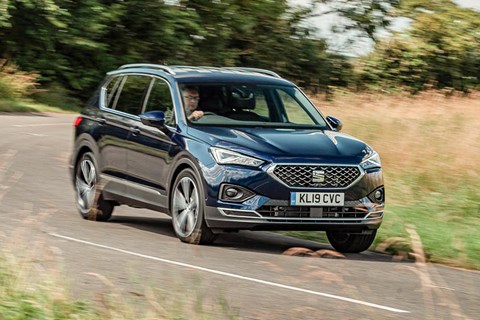
It's as much about the passengers as it is about the driver. Those middle-row passengers are particularly well served for leg room, even if you slide the seats forward to give the kids in row three more space. The outer two passengers also get a tray each. Hinged at the top, they can be locked in a part-open position that makes them good for holding laptops or tablets. In this high-spec version, they also get heated seats.
In our seven months nothing went wrong, nothing wore out, and fuel consumption stayed steady in the mid to high 30s (with the odd visit to the low 30s). It took on 10 litres of AdBlue two months ago.
And the ruddy sat-nav was infuriating; it certainly wasn't much help in getting me to Telford, Chepstow etc. There's no point in telling me where I was 10 seconds ago – I need it to tell me what lane to be in 10 seconds from now. I wasn't imagining it; I plugged in a Garmin DriveSmart 65 and it was far better. Nobody's going to do that on a car that has a big nav screen in the middle of the dash, but you can see why people use their phones. Annoying on a £40,000 car.
By Colin Overland
Price £38,055
Performance 1968cc turbodiesel four-cyl, 188bhp, 8.0sec 0-62mph, 130mph
Efficiency 37.2-38.2mpg (official), 36.0mpg (tested), 147g/km CO2
Energy cost 16.4p per mile
Miles this month 1409
Total miles 7586
Month 6 living with a Seat Tarraco: seat origami
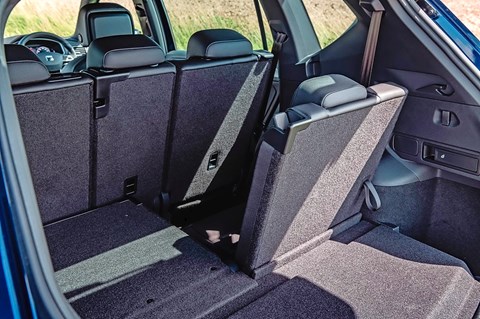
The stopwatch doesn't lie. It took one minute and 48 seconds for me to convert the Tarraco from five-seat mode, with the boot cover in place, to seven-seat mode, and barely more than 60 seconds to reverse the operation. But introduce real live humans into the equation and you have to allow at least five minutes for all the jostling and arguments to resolve themselves. Getting the kids out takes at least as long, if you include going back to rummage around under row two in search of lost earphones, drinks bottles etc.
A significant amount of the conversion time is taken up with manhandling the unwieldy boot cover – a heavy, awkward and largely superfluous hangover from the days when every self-respecting motorist carried a trilby and doily-clad box of Kleenex.
But this is niggling. We take seven seats for granted today in cars like the Tarraco, and indeed some much smaller cars, but really this ease of use doesn't date back any further than the Flex7 system, Vauxhall's gift to the world with 1999's first Zafira. Before then, bonus kids had to perch on cinema seats in the boot of your Merc or Peugeot estate, or take their chances on the roof.
My colleague Mal Bailey borrowed the Tarraco the other day so that he could ferry a bunch of his daughter's friends around. It was the most natural, unremarkable thing in the world. 'How did it go?' 'Fine.' Even under intensive interrogation, he really didn't have anything to add. Nobody got trapped. Nobody lost a finger. Nobody complained about a lack of space. This is progress.
It's a different story if you try to get portly adults in the third row. Even if you can squeeze in, you'll immediately regret it. The second row can be slid forward to give you some knee room, but the actual seats in row three are small. Take the hint – keep out.
Usefully, there's still some luggage space behind row three. It's not much but it means you can don't have to balance your shopping on your knees.
By Colin Overland
Price £38,055
Performance 1968cc turbodiesel four-cyl, 188bhp, 8.0sec 0-62mph, 130mph
Efficiency 37.2-38.2mpg (official), 36.0mpg (tested), 147g/km CO2
Energy cost 16.4p per mile
Miles this month 1409
Total miles 7586
Month 5 living with a Seat Tarraco: in bits
The gearbox
The manual over-ride is getting a lot of use. Considering what a torquey engine this is, it's odd how frequently it struggles. There's an emissions-minded hesitancy about it at low revs, and a tendency to be in too high a gear. So to overcome it you change gear yourself.
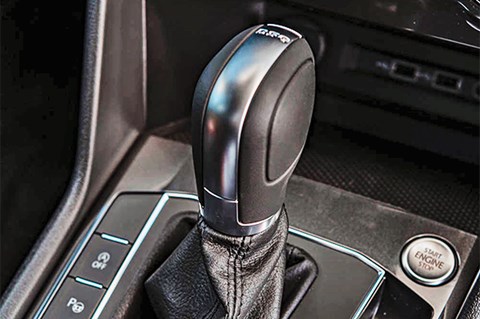
The cruise control
It's fine. Except these days anything that doesn't
co-ordinate sat-nav and cruise control seems like half a job. I've been spoilt by fancy Mercs that know I'm about to turn left, and encourage appropriate deceleration. It's not the car, it's me. I've changed.
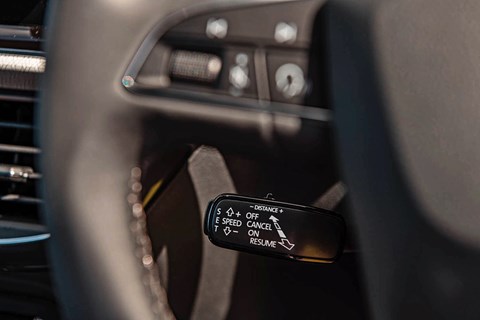
The sat-nav
I like to think I 'get' VW Group GPS, but I've just returned from a particularly irksome journey to Birmingham in which I was anything but attuned to the Tarraco's sat-nav. It kept on telling me where I was, but only at the last moment telling me where to go. Infuriating.
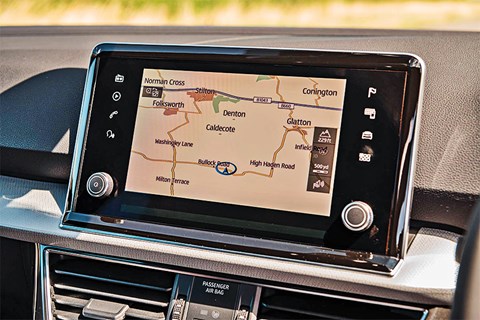
The typography
The Seat Alhambra is a rarity: a surviving MPV that feels as though it belongs in 2020. One of the many things I admire about it is the typography on the Alhambra badge. The first two As curve one way; the third curves the other. The Tarraco does much the same. Lovely.
By Colin Overland
Price £38,055
Performance 1968cc turbodiesel four-cyl, 188bhp, 8.0sec 0-62mph, 130mph
Efficiency 37.2-38.2mpg (official), 37.8mpg (tested), 147g/km CO2
Energy cost 15.7p per mile
Miles this month 1187
Total miles 6177
Month 4 living with a Seat Tarraco: proper platform
You can learn a lot about a car when you're looking the other way. More specifically, when you're using a familiar car as a support vehicle on a supercar photo shoot, you discover previously hidden qualities. Or rather, your colleague Adam Binnie does.
Here's what he said after an intense couple of days chasing the McLaren GT, Ferrari Portofino and Honda NSX around Wales: 'It was super comfy on the drive up and surprisingly capable on that Bala road too when I was driving behind the fast stuff.
'It was a stable and large enough platform for photographer John Wycherley, but able to catch up or accelerate out of the way too. It's just a pity about the noisy wipers.'
By Colin Overland
Price £38,055
Performance 1968cc turbodiesel four-cyl, 188bhp, 8.0sec 0-62mph, 130mph
Efficiency 37.2-38.2mpg (official), 39.6mpg (tested), 147g/km CO2
Energy cost 15.4p per mile
Miles this month 1197
Total miles 4990
Month 3 living with a Seat Tarraco: spot the difference
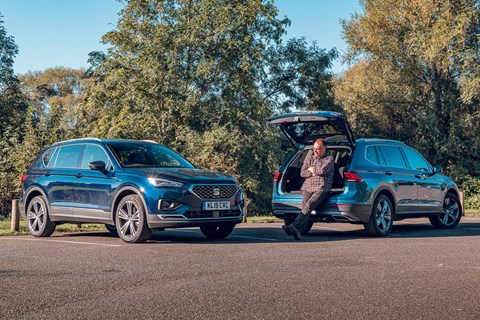
Time for me to shut up about this being merely a Seat-badged generic VW Group product. When you actually put two of them together, the differences loom much larger than the similarities. Comparing my Tarraco with a VW Tiguan Allspace was highly illuminating.
The comparison isn’t quite like for like. Although both are 2.0-litre diesels with all-wheel drive and a DSG gearbox, mine is 40bhp more powerful. And my Tarraco is Seat’s top spec, whereas the VW is the lowest Allspace spec. But the price, performance and equipment lists are pretty similar.
And yet they feel quite distinct. Fine tuning of the control weights and suspension settings gives a markedly different feel. The firmer-riding Seat feeds back more about the road surface and involves you more in the driving process.
All down to that 40bhp difference? That must come into it. But I’m more inclined to believe that the Seat team have done a very good job within very tight constraints.
By Colin Overland
Price £38,055
Performance 1968cc turbodiesel four-cyl, 188bhp, 8.0sec 0-62mph, 130mph
Efficiency 37.2-38.2mpg (official), 39.6mpg (tested), 147g/km CO2
Energy cost 15.4p per mile
Miles this month 1152
Total miles 3793
Month 2 living with a Seat Tarraco: no place like home
'Generic' gets a bad press. But surely something being typical of its type is only a bad thing if that type is a bad thing. And that doesn't apply to VW Group crossovers, which are all somewhere on a spectrum that runs from good to excellent.
Having driven a lot of VW Group crossovers (starting way before they were called crossovers) I know how to set them up in a way that suits me: which drive mode to use, when to turn to the paddleshifters, how the sat-nav works, and the audio.
The details change over the years and between makes and models, but the logic stays the same. It's the stuff your fingers know better than your brain: twiddling this knob that way will zoom in on the nav, how many folder icons you need to click to work your way back to the Media menu, that sort of thing.
And my favourite: the shortcut to deactivate lane assist. It takes forever to find it and deactivate it via the central touchscreen, but if you're in the know you can do it in two clicks, hands still on the wheel.
By Colin Overland
The best seven-seater SUVs
Price £38,055
Performance 1968cc turbodiesel four-cyl, 188bhp, 8.0sec 0-62mph, 130mph
Efficiency 37.2-38.2mpg (official), 38.6mpg (tested), 147g/km CO2
Energy cost 16.4p per mile
Miles this month 1283
Total miles 1659
Month 1 living with a Seat Tarraco: hello and welcome

When our heirs look back to 2019 from their hoverboard-and-monorail future, they’ll surely take a moment to reflect on the magnificence of one car in particular. It’s the least sexy, least pretentious but most fit-for-purpose car on sale today: the Nissan X-Trail.
I mention that here because, having recently renewed my acquaintance with the X-Trail and been reminded of its low-key brilliance, I’m very clear in my mind about what I want to find out in my time with the Seat Tarraco: is it as good as the X-Trail? Beloved of rugbymums and equestrian dads, building-site supervisors and mobile hairdressers alike, it may not be the car Seat had in mind as the key rival, but buyers should be making the comparison.
Other members of the CAR team drove the Tarraco before I did, and largely raved about it, much as they’d raved about its Skoda Kodiaq cousin before it (but not the VW equivalent, the Tiguan Allspace, for some reason). So my expectations were high – and the scope for disappointment huge – but when I first drove it I too was very impressed. Yes, it’s generic VW Group to a very large extent – but that’s a good thing. Lovely clean, modern, European design (done at Seat HQ in Martorell). Well built (in Wolfsburg). Nice font for ‘Tarraco’ on the bootlid. Lots of equipment, all of it easy to operate. More modern and techy than the Nissan.
Ours is the top-spec Xcellence Lux version, which includes pretty much the full suite of safety, comfort and convenience features. Ours has no extras. In that context, it’s well priced next to the Nissan.
Our engine is the most powerful of the diesels (there’s also a choice of petrols, with a plug-in hybrid due next year). It has a DSG paddleshift auto and four-wheel drive (below). The numbers are good. But it’s let down by a very laggy throttle, and not just in Eco mode. That’s got to be something to do with keeping the fuel consumption and CO2 emissions down, a bit of a preoccupation within the VW Group these days. Needless to say, the Nissan isn’t blighted in this way.
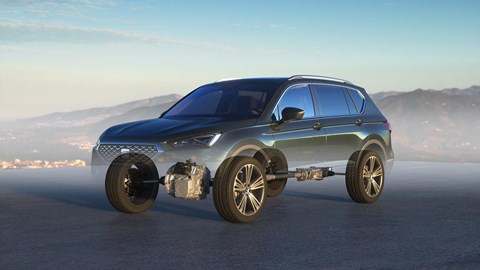
That aside, the Tarraco is a joy to drive. It’s a big car with lots of room for the row-two passengers (although the Nissan has more luggage space), but on the road its size disappears. The ride is on the firm side, whereas the X-Trail is on the soft side; call that one a draw.
There’s lots to explore: many driving modes, including proper off-road potential; that third row of seats; doubtless more safety and connectivity than I’ve so far discovered; and perhaps a magic combination of modes and preferences that will sort out that throttle lag.
But given the stiff competition it’s up against – not to mention my own rigid prejudices – this is looking like a very distinguished addition to an overcrowded field.
By Colin Overland
The best seven-seater SUVs
Price £38,055
Performance 1968cc turbodiesel four-cyl, 188bhp, 8.0sec 0-62mph, 130mph
Efficiency 37.2-38.2mpg (official), 38.6mpg (tested), 147g/km CO2
Energy cost 16.4p per mile
Miles this month 1283
Total miles 1659
More long-term tests by CAR magazine